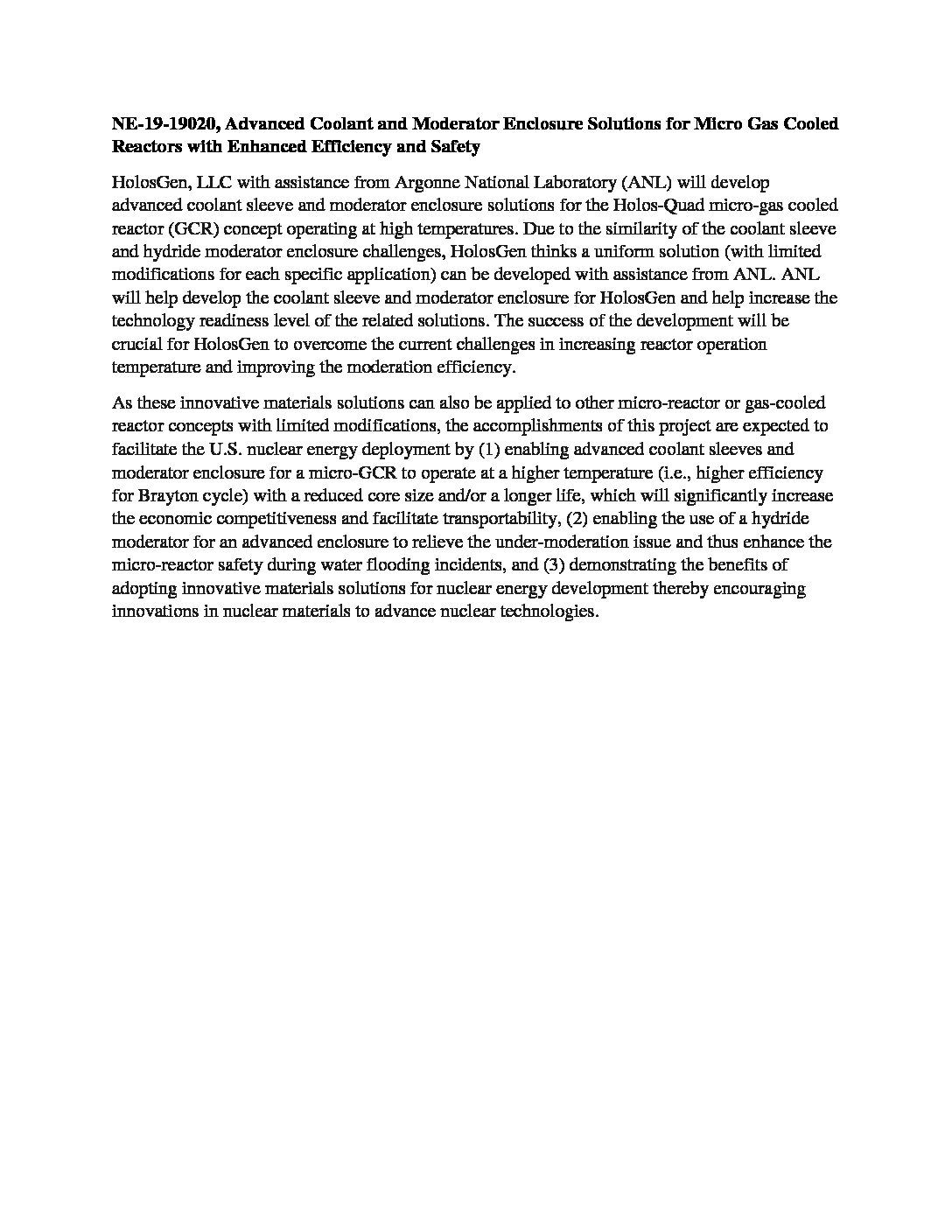
High-Temperature Reactors
Developing reliable, affordable sources of energy will be the next decade’s greatest challenge for U.S. power producers. Several U.S.-based companies are developing high-temperature reactors, a type of advanced nuclear reactor, to help meet this unprecedented demand for energy.
What are High-Temperature Reactors?
High-temperature reactors are a type of graphite-moderated thermal reactor employing TRISO fuels, differentiating them from other advanced reactor concepts. High-temperature reactors use either inert gas or molten salt as a heat transfer medium. Developers of this reactor type offer increased safety, remote power, and industrial applications.
High-temperature reactors typically use low-enriched uranium fuel to produce higher reactor outlet temperatures than other reactors. For this reason, they offer a viable replacement to industrial fossil fuel processes.
Quality Process Heat for Industrial Applications
All high-temperature reactor systems have the ability to reach higher and more precise temperatures than those that use fossil fuels.
High-temperature reactors’ ability to consistently produce quality heat is especially important in industrial chemical processes, where a plant must maintain a set range of temperatures for successful production. High-temperature reactors, therefore, can reduce the margin of error for operators, resulting in greater cost efficiencies.


Inherent Safety Starting at the Fuel Source
High-temperature reactors are built around safety, beginning with advances in nuclear fuel technology. All high-temperature reactors use “tri-structural isotropic” fuels, commonly referred to as TRISO fuels. TRISO fuel comes in different shapes and sizes; no matter the form, this advanced fuel source contains a small amount of low-enriched uranium fuel within three layers of protective graphite and silicon carbide.
These TRISO particles are incorporated into a graphite matrix within spheres (“pebbles”) the size of a golf ball or a tennis ball, or into blocks (“compacts”). The coatings around the TRISO particles fully contain fission products resulting from the nuclear reaction, eliminating the need for costly, concrete containment structures.
Load Following and Integration
By deploying high-temperature reactors in an energy mix, power producers are able to provide reliable electricity to customers while integrating with other generation technologies.
Flexible, load-following capabilities of high-temperature reactors enable integration with intermittent energy sources; moreover, the high-grade heat produced by high-temperature reactors makes thermal energy storage or integration with industrial processes possible and attractive during low electricity demand intervals.

Resources About High-Temperature Reactors
Download reports, presentations and additional resources about high-temperature reactors.











